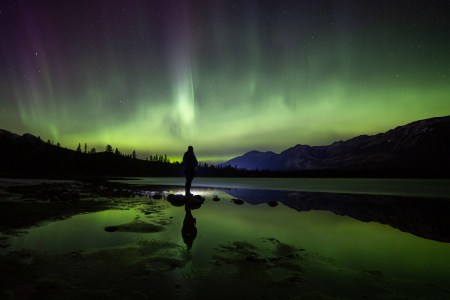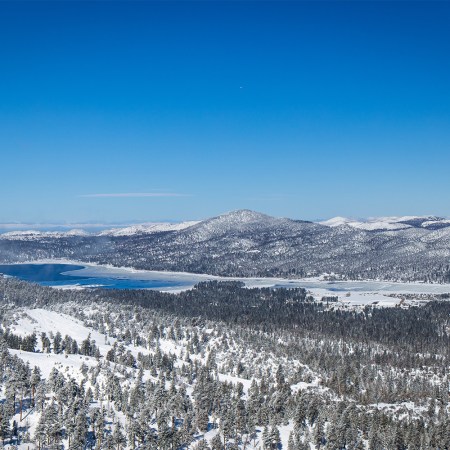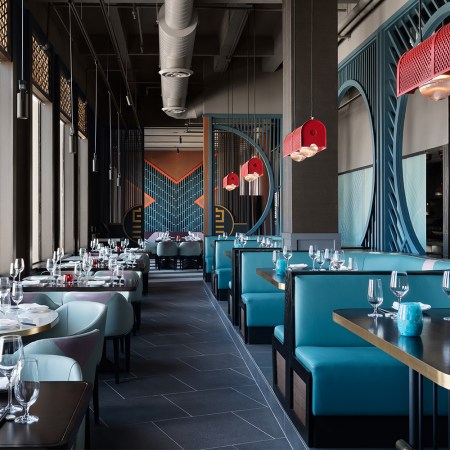The Eiffel Tower spells romance, Big Ben conjures the singular traditions of Shakespeare’s “sceptred isle” and the Empire State Building telegraphs the inimitable energy of the Big Apple. Like these, the Golden Gate Bridge is an immediately recognizable landmark. Spanning water, often shrouded in fog, and a stellar frame for the setting sun, this masterpiece of engineering is in dialogue with the natural world in a way that these other urban wonders are not. Robustly built — construction began January 5, 1933, 90 years ago this week — it has become a part of the environment and the preeminent symbol of the City by the Bay.
The bridge was a long time coming. Railroad magnate Charles Crocker called for one back in 1872. The ball really got rolling in 1919, when San Francisco City Engineer Michael O’Shaughnessy began to explore the possibility of linking San Francisco with Marin County. In 1922, O’Shaughnessy publicly revealed a design by structural engineer Joseph Baermann Strauss. Strauss — who told a radio audience “a great city with water barriers and no bridges is like a skyscraper with no elevators” — had been promoting his plan to civic and business leaders and he kept at it. “It took two decades and 200 million words to convince people the bridge was feasible,” he later remarked.
Just weeks after crews began moving tons of earth to prepare for the bridge’s anchorages, a “day of pageantry” was held to celebrate the construction of the “largest and most spectacular span ever attempted by the hand of man.” When it was completed in 1937, the Golden Gate Bridge was just that, the tallest and longest suspension bridge on the planet — and soon one of the most photographed structures in the country.
Photographers, amateur and pro, were drawn to the bridge from the start. Ted Huggins, a Berkeley native who had helped organize the groundbreaking ceremony, was among the first. Employed as a PR man at Standard Oil of California — under whose aegis he launched his documentary project — Huggins spent over three years snapping the bridge as it rose. When the Golden Gate Bridge opened, Life magazine put one of his vertiginous images on the cover.
Huggins wasn’t shooting picture postcards. Climbing cables and towers to shadow construction workers, he captured the dizzying scale of the project and the heavy lifting of steel and concrete that made it possible. His images of men doing dangerous work — 11 died during construction — hit home in the 1930s, when so many were jobless and the country was desperate for a time when everyone could get back to collecting a paycheck.
How to Photograph the Northern Lights During the Solar Maximum
How to choose the right gear, camera settings and the perfect time to photograph the colorful skiesMore recently, adventure photographer and tech entrepreneur Christopher Michel mounted the heights of the bridge, capturing the sweep of its cables beneath low clouds as the sun reflected off the seemingly green waters of the bay. And when they aren’t wending their way down Lombard Street or heading across to Alcatraz, tourists can be found orchestrating the perfect selfie, with the bridge as backdrop.
Fifty years after folks began cruising across it, legendary San Francisco Chronicle columnist Herb Caen asserted, “The mystical structure, with its perfect amalgam of delicacy and power, exerts an uncanny effect. Its efficiency cannot conceal the artistry. There is heart there, and soul. It is an object to be contemplated for hours.”
Whether viewed from below at Fort Point National Historic Site or from the sands of Baker Beach (from which Ansel Adams shot it in 1953) or from afar at Lands End, the Golden Gate Bridge does demand attention. Search the bridge at the Art.com marketplace and the array of images, from prosaic to poetic, is proof of that.

When photographer Brandon Nesbitt (imagesbybrandon.com) relocated from Philadelphia to San Francisco in 2016, one of the first things he did was set out to shoot the bridge. “San Francisco is more than the Golden Gate Bridge, but it might be the most famous structure in the city. I would argue it’s the most famous structure in the state and quite possibly the most famous bridge in America. So it had to be my first stop.” It wasn’t his last.
“Because the bridge is so massive, from any vantage there is always a great view to be had,” says Nesbitt, who has just released his first book, Skylines of America. He has particularly enjoyed shooting at sunrise from the Marin Headlands, capturing the sky, the bridge and the city. “I think I found success with the willingness to keep going back again and again, at all times of the day and night. The changing weather drew me in.”
As fine a subject as it is, there are times when it doesn’t hurt to lower the lens and just appreciate the Golden Gate Bridge as an engineering feat, a testament to Depression-era drive, a gargantuan piece of industrial art. Even Nesbitt, who has yet to tire of aiming its way, has his moments.
“While standing on Hawk Hill, with the fog covering the bay and the ocean and most of the city, the bridge towers sticking out along with the peaks of skyscrapers, there was an overall calm, so that I found myself taking it all in, instead of capturing images of it.” For now.
This article was featured in the InsideHook newsletter. Sign up now.























